Occupational safety training for operating powered pallet jacks
99,000 ₫
Note: The above price is calculated per person and may vary depending on the number of participants in the course and market fluctuations. For more accurate pricing information, please refer to the pricing list or contact our consultation staff directly.
Occupational safety is a critical issue when operating powered pallet jacks and must be addressed promptly to ensure the health and safety of workers while enhancing the reputation of businesses. The Occupational Safety Training course is an effective solution to raise awareness on preventing workplace accidents for workers operating powered pallet jacks.
Table of Contents
Toggle1. Overview of Manipulator Arms
a. What is a Manipulator Arm?
A manipulator arm, also known as a Manipulator Arm, is a device or mechanical system designed to assist humans or machines in lifting, moving, and positioning objects. Manipulator arms are commonly used in various applications, including manufacturing, electronics assembly, planetary exploration, healthcare, and many other fields.
Manipulator arms can be programmed to perform specific tasks and can be remotely controlled or automated to increase efficiency and ensure safety in various applications. They play a crucial role in optimizing production processes, improving productivity, and reducing risks in hazardous working environments.

b. Applications of Manipulator Arms in Production
Manipulator arms have many important applications in manufacturing, helping to optimize production processes, improve efficiency, ensure worker safety, and reduce time and effort. Some common applications include:
- Lifting and Moving Products: Manipulator arms are used to lift and move heavy or bulky products or materials during production. This reduces the risk of worker injuries and increases productivity.
- Welding and Assembling Products: In welding and assembly, manipulator arms can position and hold product parts accurately for welding or assembly, ensuring precision and consistency in production.
- Packaging and Boxing: Manipulator arms can be used to package products or box goods, speeding up packaging and reducing the risk of damage or loss.
- Sorting and Arranging: On automated production lines, manipulator arms can be used to sort and arrange products or materials.
- Inspection and Quality Control: Manipulator arms can position products for quality checks, testing, and inspections.
- Component Placement: In automotive and electronics manufacturing, manipulator arms are often used to place and assemble components into final products.
- Automating Production Processes: Manipulator arms can be integrated into automated systems to perform production tasks without human intervention.
- Operations in Hazardous Environments: In dangerous working environments, manipulator arms can perform tasks unsafe for humans, such as handling hazardous materials or working in extreme conditions.

c. Industries Using Manipulator Arms
Manipulator arms are used in various industries to improve efficiency, ensure safety, and optimize workflow. Some common industries include:
- Automotive Industry: Manipulator arms are used to assemble car parts, attach components, and even paint vehicles. These tasks require high precision and lifting capabilities to meet quality standards.
- Electronics Manufacturing: Manipulator arms are used to assemble electronic components on PCBs, perform quality control, and package final products, requiring high accuracy and speed.
- Consumer Goods Manufacturing: Industries producing food, household items, and hygiene products use manipulator arms for packaging, boxing, and arranging products on production lines.
- Pharmaceutical Manufacturing: Manipulator arms are used to package and box pharmaceutical products, ensuring precision and hygiene standards.
- Food and Beverage Industry: Manipulator arms handle, package, and move food and beverage products, ensuring safety and hygiene compliance.
- Oil, Gas, and Energy Industry: Manipulator arms lift and move heavy equipment such as pipes, drilling tools, and energy components.
- Metal Products Manufacturing: In metal and fabrication industries, manipulator arms help lift, move, and position large, heavy metal products.
- Chemical Manufacturing: Manipulator arms are used to handle and transport hazardous chemicals safely.
2. Overview of Safety Training for Operating Manipulator Arms
a. What is Occupational Safety Training?
- Occupational safety training for operating manipulator arms consists of courses designed to raise awareness on accident prevention. Workers directly operating manipulator arms fall under Group 3.
- Safety training helps workers recognize and prevent hazards, reducing the risk of accidents during work.
REGISTER FOR OCCUPATIONAL SAFETY TRAINING
b. Training Duration
Initial Safety Training
- Total training time is at least 24 hours, including testing.
- 8 hours of theory on safety policies and occupational safety laws
- 8 hours of theory on basic occupational safety knowledge
- 4 hours of theory on specialized training content
- 2 hours of practical training on specialized content
- 2 hours of final theory test
Safety training centers schedule sessions according to worker availability, usually in 6 sessions over 3 days if continuous learning is possible.
Periodic Safety Training
- Before the occupational safety card expires, workers must attend periodic safety training, with a minimum duration of 50% of the initial training time.
Explanation: The total periodic training time is at least 12 hours, including testing. After completing the training and passing the test, workers will be reissued or extended their safety cards.
c. Training Content
| No. | TRAINING CONTENT | TRAINING DURATION (HOURS) | |||
| Total | Including | ||||
| Theory | Practical | Test | |||
| I | Policies and Occupational Safety Laws | 8 | 8 | 0 | 0 |
| 1 | Overview of legal documents related to occupational safety and hygiene. | 6 | 6 | ||
| 2 | Standards and technical regulations on occupational safety and hygiene. | 1 | 1 | ||
| 3 | Specific regulations by state management agencies regarding occupational safety and hygiene for new, expanded, or renovated production facilities and the inspection of machinery, equipment, materials, and substances with strict safety and hygiene requirements. | 1 | 1 | ||
| II | Basic Occupational Safety Knowledge | 8 | 8 | 0 | 0 |
| 1 | Basic knowledge of workplace hazards and harmful factors. | 4 | 4 | ||
| 2 | Methods to improve working conditions. | 1 | 1 | ||
| 3 | Safety culture in production and business. | 1 | 1 | ||
| 4 | Rights and responsibilities of employers and employees; policies on occupational safety; roles of safety officers. | 1 | 1 | ||
| 5 | Workplace safety rules, safety signs, and use of personal protective equipment; first aid skills; prevention of occupational diseases. | 1 | 1 | ||
| III | Specialized Training Content | 6 | 4 | 2 | 0 |
| Comprehensive knowledge of machinery, equipment, hazardous substances; risk analysis, management, and safe working procedures with machinery, equipment, and materials with strict safety requirements. | 6 | 4 | 2 | ||
| IV | Final Safety Training Test | 2 | 2 | 0 | 0 |
| Total | 24 | 22 | 2 | ||
See more training content of 6 groups
d. Occupational Safety Card
After completing occupational safety training and passing the test, workers will be issued a safety card (commonly called occupational safety certificate for Group 3).
The Group 3 safety card clearly displays: full name, date of birth, job, work environment, training duration, official seal, and signature confirming completion of the course.
According to the regulations in Clause 2 of Article 24 of Decree 44/2016/ND-CP, there are two cases:
- If the employer and employee have a labor contract, the employer must stamp and endorse the safety card for Group 3 trainees after completion of training and passing the test.
- If the worker is freelance or temporary, without a labor contract, the training unit must stamp and endorse the safety card after training completion and passing the test.

3. Hazards When Operating Powered Pallet Jacks
Operating powered pallet jacks can pose several hazards if safety rules are not followed and proper training is lacking. Below are some common hazards when operating powered pallet jacks:
- Physical Injuries: Powered pallet jacks are often used to lift and move heavy objects. Improper use or failure to follow safety rules can result in physical injuries such as collisions, crushing, or slips and falls.
- Product Loss or Damage: Inaccurate handling of the pallet jack can lead to product loss or damaged components, resulting in waste and asset loss.
- Falling Loads: Lifting heavy objects carries the risk of items falling if not secured or lifted correctly. This can cause injury to personnel or property damage.
- Overloading the Jack: Exceeding the weight capacity of the powered pallet jack can damage the equipment and create hazardous situations.
- Fire and Explosion: In industrial environments such as chemical plants, using pallet jacks improperly in hazardous areas may lead to fire or explosion if safety measures are ignored.
- Unsafe Conditions in Toxic Environments: In workplaces with toxic substances, pallet jacks must be designed to protect operators from harmful chemicals and gases.
- Loss of Control or Equipment Malfunction: If a powered pallet jack loses control or suffers a technical failure during operation, dangerous situations can arise.
To mitigate these risks, operators of powered pallet jacks must follow safety rules, perform regular maintenance on the equipment, and participate in safety training programs. This helps reduce the risk of accidents and ensures safe operation of the pallet jack.

4. Accident Prevention Measures When Operating Powered Pallet Jacks
To prevent accidents when operating powered pallet jacks, several key measures should be implemented. Below are important control measures:
- Occupational Safety Training: Ensure all operators and relevant personnel are trained in safe use of pallet jacks, including operation, safety checks, and proper handling procedures.
- Regular Inspections: Inspection of pallet jacks should be performed periodically to detect safety issues such as wear, mechanical faults, or malfunctions, reducing the risk of accidents.
- Proper Use: Ensure the pallet jack is used according to the manufacturer’s instructions and safety rules. Avoid misuse or unsafe applications.
- Safe Load Handling: Do not exceed the pallet jack’s lifting capacity. The weight of objects should be verified and within the jack’s rated capacity.
- Personal Protective Equipment (PPE): Operators should wear appropriate PPE such as safety glasses, gloves, and heat-resistant clothing depending on the working environment.
- Technical Supervision: Use monitoring systems to track the jack’s operational status and detect faults early.
- Safe Work Environment: Ensure the workplace is safe for pallet jack operation by removing obstacles and hazards.
- Even Load Distribution: When lifting objects, ensure the load is evenly distributed to prevent tipping.
- Warning Signs and Signals: Use warning signs, signals, and lights to alert others when pallet jacks are in operation.
- Safety Planning: Plan tasks before operation, including risk assessment and specific safety measures.
- Emergency Handling: Train operators to handle incidents or emergencies during pallet jack operation.
- Incident Reporting: Require operators to report any accidents, incidents, or equipment failures immediately.

5. Benefits of Occupational Safety Training
An Toan Nam Viet provides enterprises with the following benefits after completing occupational safety training courses according to Decree 44/2016/ND-CP on occupational health and safety:
- Workers can recognize potential accident risks and take preventive measures to avoid workplace accidents.
- Enterprises can implement risk prevention measures in production, operation, and maintenance processes.
- Reduce costs associated with workplace safety hazards.
- Continuous production improves labor productivity and product quality.
- Ensure compliance with occupational safety laws and reduce legal risks.
- Enhance reputation and professionalism, boosting the company’s brand.
Nam Viet training courses provide solutions to help individuals avoid external hazards that could lead to injury or even death.
REGISTER FOR OCCUPATIONAL SAFETY TRAINING SERVICE
6. Customer Feedback After Training
An Toan Nam Viet has many years of experience collaborating with enterprises across Vietnam, especially in the southern provinces. This responsibility is highly valued, which is why our Occupational Safety Training is increasingly professional. The motivation behind our growth comes from positive feedback and constructive suggestions from clients. Below are some testimonials from partners we have served.
See more customer interviews after using our services at An Toan Nam Viet
7. Training Capabilities of An Toan Nam Viet
An Toan Nam Viet is a reputable occupational safety training center in Vietnam, conducting continuous training at factories, workshops, and construction sites nationwide (all 63 provinces).
REGISTER FOR OCCUPATIONAL SAFETY TRAINING SERVICE
Training License
- An Toan Nam Viet has been certified by the Department of Labor – Social Affairs to provide occupational safety and hygiene training, strengthening our training capabilities.

Training Materials
- All training materials for OHS courses are reviewed and verified to ensure accuracy and effectiveness.
- Teaching methods are standardized according to An Toan Nam Viet standards, developed by occupational safety experts to maximize learning outcomes.
Facilities
- Control of classroom factors enhances teaching efficiency and knowledge retention.
- Our training facilities are spacious and meet standards for area, lighting, and training equipment.
8. Nationwide Reputable Training Center
At An Toan Nam Viet, we prioritize professionalism in occupational safety training. We aim to equip workers with knowledge to protect themselves, contributing to national development.
Every detail is carefully prepared, from tools and teaching materials to audio-visual setup. Our trainers are experienced professionals, with research on hazard identification across industries.
Our lessons are practical, engaging, and compliant with Decree 44/2016/ND-CP, allowing workers to learn hazard prevention and self-protection effectively.
Our training center is proud to provide reputable, professional occupational safety training with these advantages:
- Competitive training costs without compromising quality.
- Flexible scheduling according to company production.
- Fast certification processing in accordance with the law.
- Experienced instructors.
- Classroom environment optimized for effective learning.
- Lessons tailored to enterprise occupational safety needs.
- Dedicated, professional service to support clients efficiently.

9. Additional Occupational Safety Training Resources
1 review for Occupational safety training for operating powered pallet jacks
No comments yet

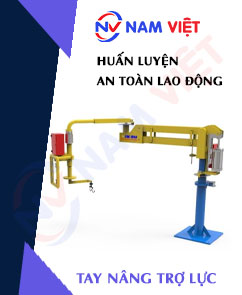
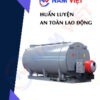




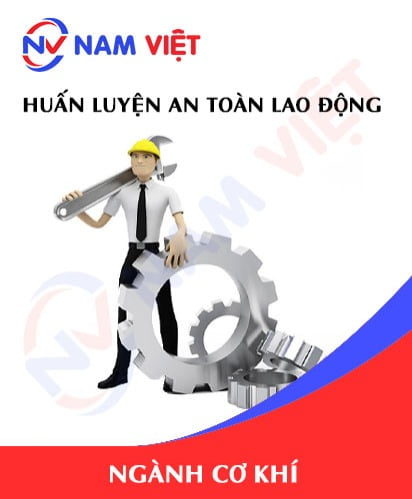
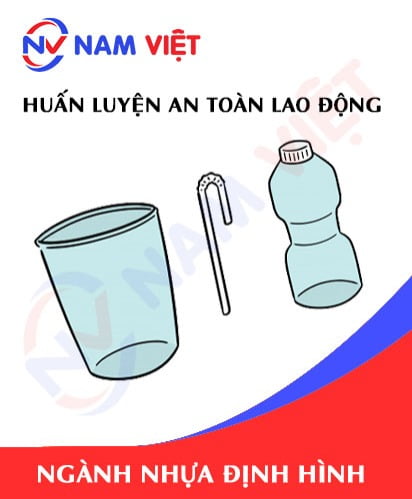


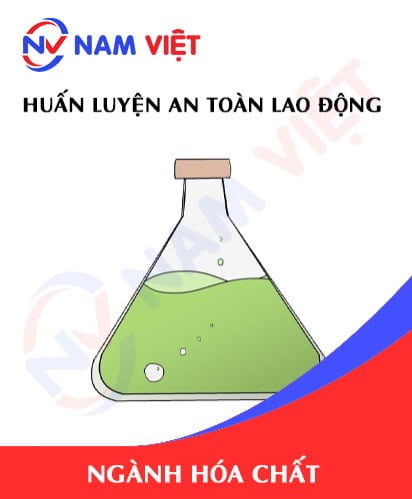

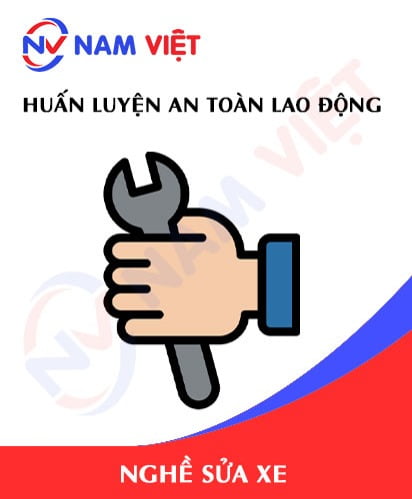

phanminhhang341
Good labor safety unit